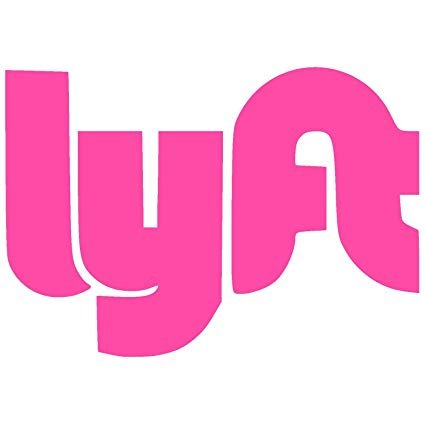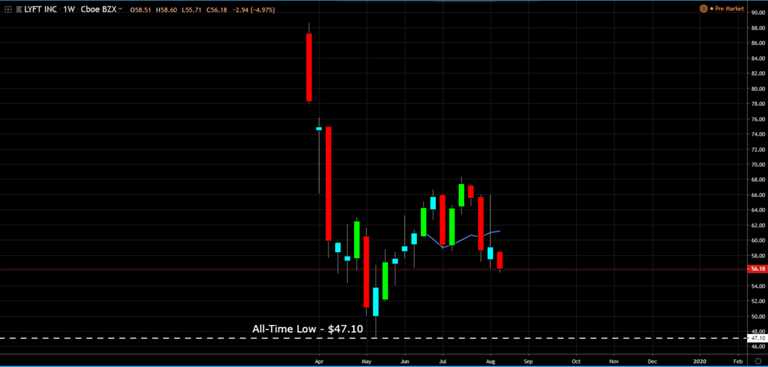
Back in late March Lyft made their debut on the stock exchanged and opened at $72 per share. Lyft is now down 18% since its IPO. Despite the positive earnings last week, which included raising their full-year outlook, Lyft has further downside. There have been countless questions and discussions surrounding Lyft’s business model.

In fiscal 2019, Lyft expects to generate revenue of at least $3.47 billion with an adjusted EBITDA loss of $850 million to $875 million. In 2018, Lyft’s EBITDA’s loss was around $850 million. Thus, Lyft may never make a profit, nor do they have a clear path to profitability.
But here is why I think Lyft is a short now. During their earnings announcement last week, where they reported raised their full-year outlook, Lyft said they are cutting down their lock-out period from late Sept. to Aug 19th.
“The lock-up period is scheduled to end on September 24, 2019, which falls within the Company’s quarterly blackout period that commences at the end of the day on August 31, 2019,” the company said in the filing. “Therefore, in accordance with the lock-up agreements with the underwriters, the lock-up period will end at the open of trading on August 19, 2019, which is ten trading days prior to the commencement of the Company’s quarterly blackout period. The Company will also release the market standoff agreements when the lock-up period expires.”
Lyft expects that about 257.6 million shares of Class A common stock may become eligible for sale in the public market beginning August 19. This includes about 12.8 million of Class B shares of common stock converted into Class A stock.
Newly public companies are typically subject to a lock-up period preventing insiders including founders, directors and other employees from selling their shares for a designated period of time. The restriction is intended in large part to prevent these investors from injecting large numbers of shares into the market, which could send stock prices lower by quickly increasing supply.
So there are about 274 million shares outstanding. The founders, institutions that bought a stake in the company before going public want to cash out. We are talking about potentially diluting the float (float is the number of shares actually available for trading) by almost 100%.
August 19th simply becomes a supply and demand issues, very similar to the supply and demand issues on Steem. It’s way too expensive to short the stock by borrowing shares due to the borrowing rates, which was once 100%. Thus, the best way to short Lyft is through options. But give yourself so time for the trade to work. The leap options, January 2012 options are too illiquid. But the January 2020 put options gives one plenty of time for the trade to work, which also includes time for an additional two earnings report (which may not meet expectations).
So if you think Lyft will at least test the lows within the next five months,

Consider buying some January 2020 put options with a strike price at $50, but first ensure its liquid enough.

This post is my personal opinion. I’m not a financial advisor, this isn't financial advise. Do your own research before making investment decisions.



Bro...thanks again for the info because I have had them on my watchlist!
My pleasure @theblcvktable.
Posted using Partiko iOS
That seems like a solid risk/reward there! You can even sell the $40 put for a good net spread!
Can can turn it into a calendar spread as well.
Posted using Partiko iOS